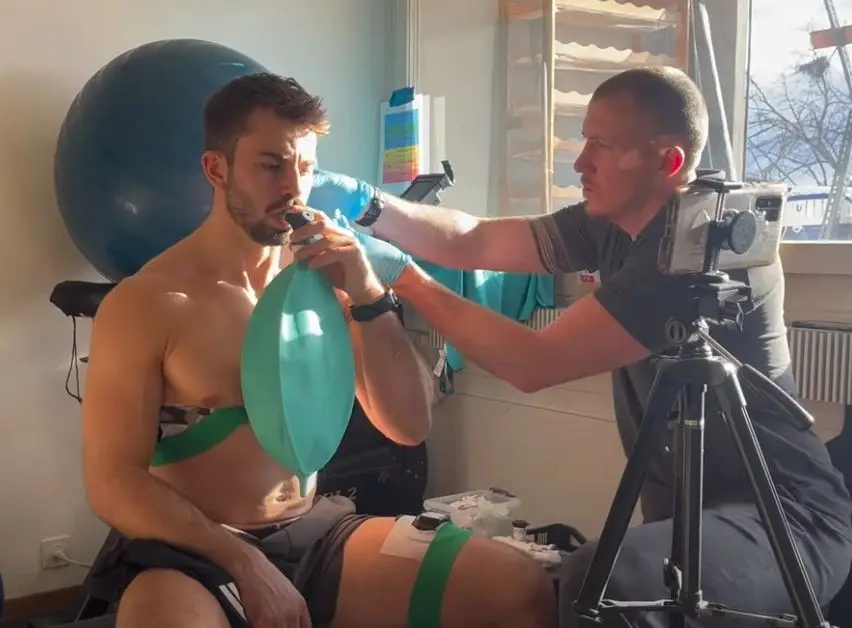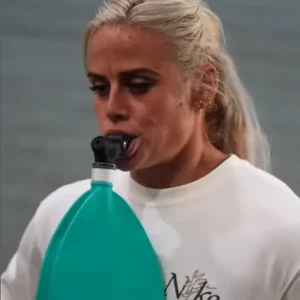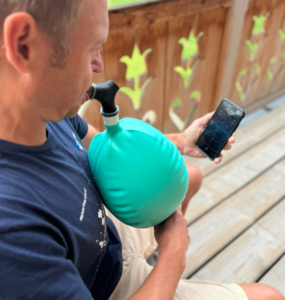
Review of: Barstow TJ, Murphy K, et al., “Respiratory Limitations during Exercise,” Current Opinion in Physiology, Volume 10, August 2019, pp. 173–179.
For decades, we’ve assumed that in healthy individuals, the lungs and respiratory system are “overbuilt”—more than capable of handling the demands of even the most intense workouts. Recent research, however, paints a different picture. Three key respiratory-related limitations can hold athletes back:
- Impaired pulmonary gas exchange
- Expiratory flow limitations
- Respiratory muscle fatigue
In this article, we’ll explore each of these challenges and show how our Breathe Way Better (BWB) system can directly tackle the last two—and with advanced training, even help improve gas exchange over the long term.
Respiratory Muscle Fatigue: The Hidden Drain
When you’re working above about 80% of your VO₂ max (roughly at or beyond your second ventilatory threshold), your respiratory muscles suddenly get hungry for more blood flow. In fact, at these intensities up to 20–20% of your total cardiac output can be diverted to power your breathing.
This kicks on the metaboreflex, a protective mechanism that shunts blood away from your legs to keep your lungs, heart, and brain fueled. The result? “Heavy legs” and a sudden drop in power output.
Our solution: By doing targeted respiratory muscle training with the BWB, you can improve both the strength and endurance of your breathing muscles. This shifts the metaboreflex threshold higher, delays leg fatigue, and helps you maintain peak power when it matters most.
Expiratory Flow Limitations: More Than Just Asthma
Sometimes, exhaling fully becomes a battle. You’ll see a spike in pressure without a matching increase in airflow—a classic sign of an expiratory flow limitation. Though often mistaken for exercise-induced asthma, many athletes don’t actually have airway disease; they simply haven’t trained their breathing mechanics.
What happens: Rapid, shallow breathing creates high transpulmonary pressures and turbulent airflow, increasing resistance and wearing out your breathing muscles.
How BWB helps:
- Steady exhalation pressure: Training you to maintain consistent pressure throughout the breath reduces those pressure spikes and smooths airflow.
- Deeper, slower breaths: By lowering transpulmonary pressures, you minimize turbulence and resistance.
- Increased CO₂ tolerance: A more balanced breathing pattern helps you handle carbon dioxide buildup, making each breath more efficient.
Beyond Fatigue and Flow: Improving Gas Exchange
Back in 1999, Dempsey and colleagues highlighted exercise-induced arterial hypoxemia (EIAH) in fit, healthy athletes at sea level. Essentially, when your cardiac output spikes, blood can move through the lungs so fast that red blood cells don’t pick up a full load of oxygen.
Two culprits: 1) a widening alveolar-arterial O₂ pressure gap, and 2) the very expiratory flow limitations we just discussed. While scientists debated the exact mechanics for years, follow-up research has confirmed that inadequate ventilation—and the flow limitations it causes—plays a major role.
Our hypothesis: With consistent use of the BWB, we believe athletes can:
- Optimize ventilation patterns to give blood cells more time in the lungs.
- Reduce flow limitations and turbulent airflow.
- Potentially boost arterial oxygen saturation during high-intensity efforts.
We’re excited to see if our ongoing study will confirm these benefits later this year.
The Path Forward
Whether you’re chasing a personal best, racing your first triathlon, or simply want to feel stronger on your bike, a well-trained respiratory system can be a game changer. By addressing muscle fatigue, smoothing out your exhalation, and improving overall breathing dynamics, the BWB offers a practical way to push your limits safely and effectively.
Stay tuned for our study results—we’ll share the data as soon as it wraps up! In the meantime, explore our free workout programs in the BWB app and start breathing your way to better performance today.



